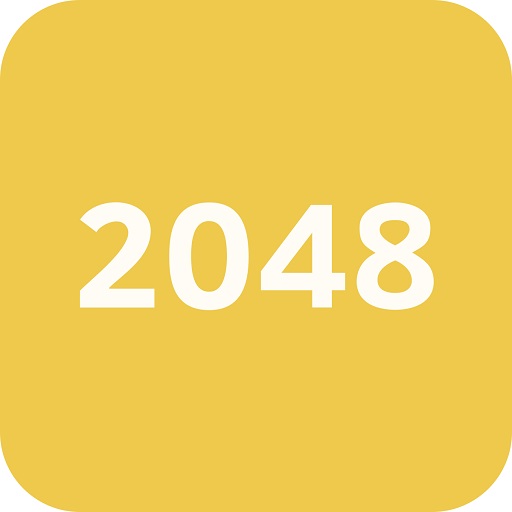What Is 2048? Core Gameplay, Rules & Why It’s So Addictive
2048 is a simple yet deep logic puzzle. On a 4×4 grid, you slide numbered tiles. The goal is to combine tiles with equal numbers. Each merge creates a new tile with double the value. You win when you reach the 2048 tile. But the real draw is getting a higher score, chasing larger tiles, and beating your best run.
The controls are basic. On a computer, use arrow keys. On a phone or tablet, swipe in the desired direction. Each move pushes all tiles that way. When two tiles of the same value collide, they merge. After each move, a new tile, either a 2 or a 4, appears in an empty cell. If the grid fills and no moves remain, the game ends.
2048 stands out as one of the most addictive logic games anywhere. Why? The rules take seconds to learn, but mastering the game takes much longer. Every round is quick, but each decision matters. You get hooked by the urge to beat your last best score. This cycle draws players back for “just one more try.”
The game does not favor any group. Anyone with a few minutes can jump in. No advanced math skills are needed—2048 is for all ages, backgrounds, and skill levels. The mix of luck, logic, and surprise makes it hard to put down.
Not Just for Math Whizzes—2048 Is for Everyone!
Winning relies on patience and planning, not on advanced calculation.
Visual Guide Tip:
Picture a 4×4 chessboard. When you swipe, all tiles slide to one wall. If two “8” tiles hit, they become one “16.” Keep merging to make bigger numbers.
Step-By-Step: How to Play 2048 & Improve Quickly
Starting 2048 for the first time is easy. Here’s a simple walk-through:
How each turn works:
- Swipe or press an arrow key (up, down, left, right).
- All tiles slide in that direction.
- Tiles with the same number merge into a new, combined tile.
- One new tile (2 or 4) appears in a random empty space.
- Repeat steps until you can’t move further.
Simple Example:
- You have two “2” tiles next to each other.
- Swipe left. They become one “4” tile.
- A new “2” or “4” spawns in another spot.
- Keep merging to reach higher tiles.
Mobile and Desktop:
The feel is smooth and quick on both. The interface adapts to touch or keyboard automatically.
What Happens When You Win or Reach 2048?
When you make a single tile with the value 2048, you’ve achieved the game’s objective. A win message appears, and you can keep playing. From there, chase higher scores and tiles like 4096 or 8192. Your game only ends when no legal moves remain.
Did You Lose? Here’s What Probably Went Wrong:
- The grid filled with low-value tiles.
- You ran out of empty spaces.
- Too many random moves without planning.
- You scattered large tiles across the grid.
Careful planning and patience will help you avoid getting stuck.
Winning Strategies: From Beginner Tactics to Advanced Play
Master 2048 by understanding proven strategies. Each method offers a clear way to improve.
The Corner Strategy
Keep your highest tile in one corner. This limits the chance of breaking your chains. For example, always push tiles toward the lower right.
Try This: Choose a corner and avoid swiping up if your goal is the bottom right. Only change direction if you have no other move.
Directional Discipline
Only use two or three move directions throughout your game. This habit keeps tiles organized and prevents random scattering.
Try This: Use left and down moves most. Avoid up until forced, to keep your largest tile anchored.
Building Chains & Making Space
Arrange tiles in “snake” patterns—where each number flows to the next in a chain. Leave empty spaces open to allow new tiles to fall where you want.
Try This: Merge low numbers away from your high tile. Always try to create open cells along the edges.
Dealing with Randomness
Random new tiles (either 2 or 4) can break your plans. Adapt by keeping your grid open and not blocking key paths.
Try This: When a new tile spawns in a bad spot, pause and plan a few moves ahead. Shift your strategy to rescue chains.
Integrated Answer: What Are the Best Strategies to Consistently Beat 2048?
- Anchor your highest tile in a corner.
- Use only two or three directions.
- Build “chains” for merges, leaving space open.
- Adapt to randomness without panicking.
Modern Features, Modes & Cross-Platform Play
2048 has evolved with new tools and ways to play. Whether on browser, phone, or tablet, these options make the game simple to pick up and master.
Official Features for Learning/Mastery
- Undo Button: Lets you take back your last move if you make a mistake. Handy for learning or recovering from accidents.
- Time Trial Mode: Beat the clock to challenge yourself, not just your score.
- Power-ups (in some versions): Help unblock stuck boards or clear tough spots.
- Progress/Statistics Tracker: Shows your highest score, best tile, and games played. Helps you track improvement over time.
All these features make it easier to learn, fix mistakes, spot patterns, and practice until strategies stick.
Platform Overview: HTML5, Mobile, Tablet
2048 works in most web browsers via HTML5. Mobile apps are almost identical in play and features. Tablets offer extra space for touch controls.
- Fast loading on browser or phone
- No downloads needed for web play
- Playable on both iOS and Android
- Touch and swipe or arrow key controls
- Ideal for classrooms due to instant, unblocked access
You can often keep playing after making the 2048 tile. The challenge becomes reaching 4096 or beyond. The game ends only when no moves are left.
The Story Behind 2048: Creation, Evolution & Universal Appeal
2048 was created by Gabriele Cirulli, an Italian programmer, in 2014. He wanted a simple puzzle game to test his skill. He open-sourced the project, letting anyone tinker and improve the code. Inspired by the earlier game Threes, 2048 quickly gained a massive fan base thanks to its clear rules and deep tactics.
Because the game is open-source, many versions, mods, and spin-offs now exist. The community built larger boards, special game modes, and visual tweaks. Anyone can play, no matter their age or math knowledge. Its accessibility and simple logic draw players of all backgrounds.
Mini FAQ:
- 2048 is not just for “smart” people.
- It does not require advanced equations.
- Anyone can win with patience, strategy, and practice.
[FAQs] – Quick Answers for 2048 Players
| Question | Answer |
|---|---|
| What is the objective of 2048 and how do you win the game? | Combine like-numbered tiles to reach a 2048 tile. After that, keep playing for higher scores until no moves remain. |
| What are the best strategies or tips to consistently beat 2048? | Anchor your highest tile in a corner, use two or three directions, build chains, and adapt to randomness. |
| Why is 2048 so addictive and popular among players? | It is easy to start, hard to master, and gives constant chances for a “better run.” Simple controls and short games lead to repeat play. |
| Can you keep playing after reaching the 2048 tile, and what happens next? | Yes, you can keep merging tiles for higher scores. The game ends when no moves are possible. |
| Is 2048 a game only for smart people or can anyone play and win it? | Anyone can play and win. You need patience and planning, not advanced math skills. |
Conclusion
2048 is a puzzle game built on a simple idea: merge tiles to make bigger numbers. Its clear rules, quick rounds, and open platform make it hard to put down. With practice and the right strategies, anyone can master 2048. The game rewards patience, planning, and smart moves—not math or speed. Play, improve, and enjoy the endless challenge that 2048 offers.



